Nature for Looloo!
I thought bluegerl would enjoy a nature post today... and it was a beautiful day for an excuse to go out! I didn't go far... it is archery season here and also geese and some other birds are in season, so there are hunters around, and I didn't have anything orange with me. But I found some lovely things at my favorite dock, as long as you don't mind a walk that's heavy on pretty pictures and light on science today.
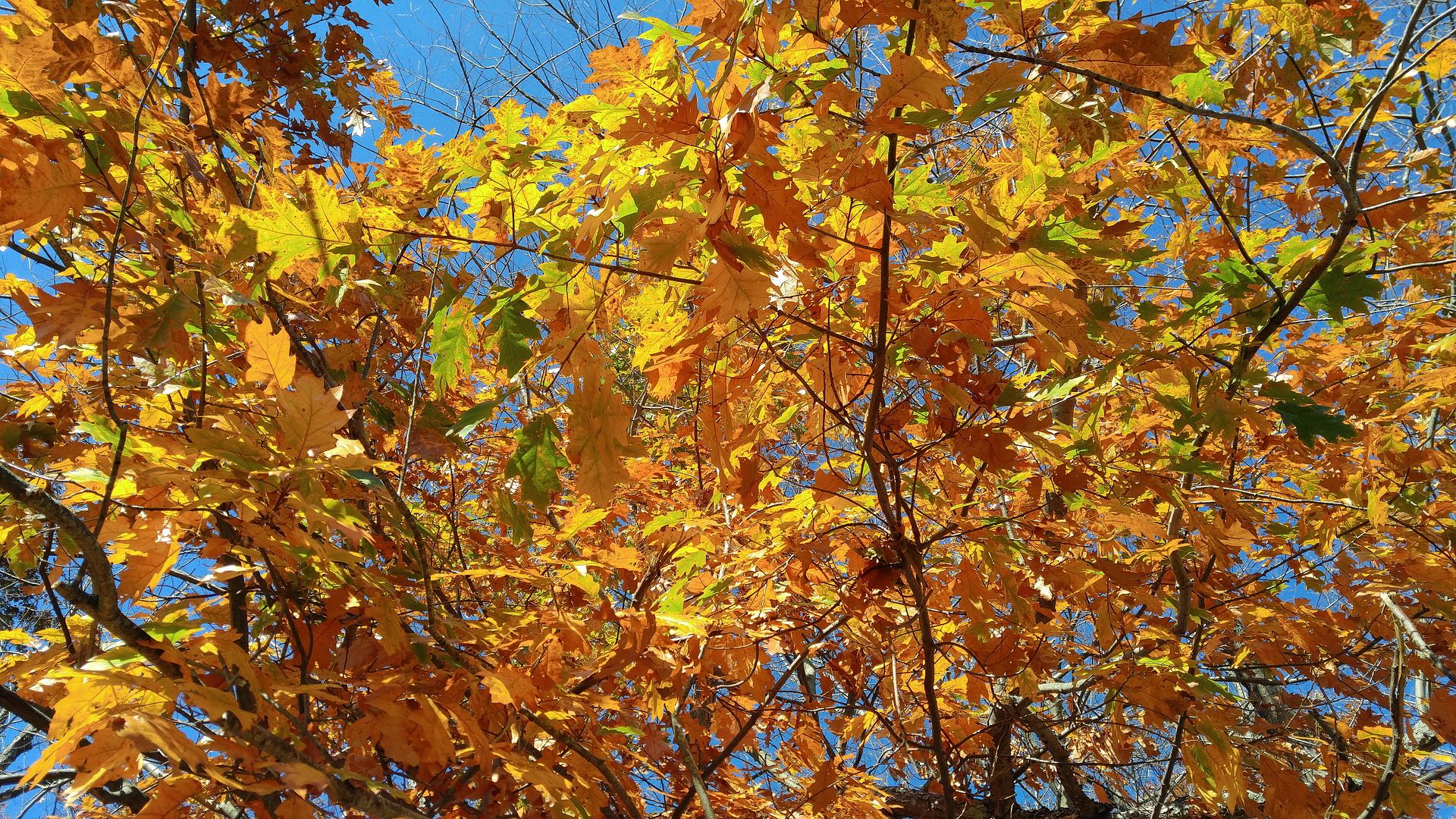
Some oaks are leafless or all brown now, but this young one's still putting on a beautiful golden display.
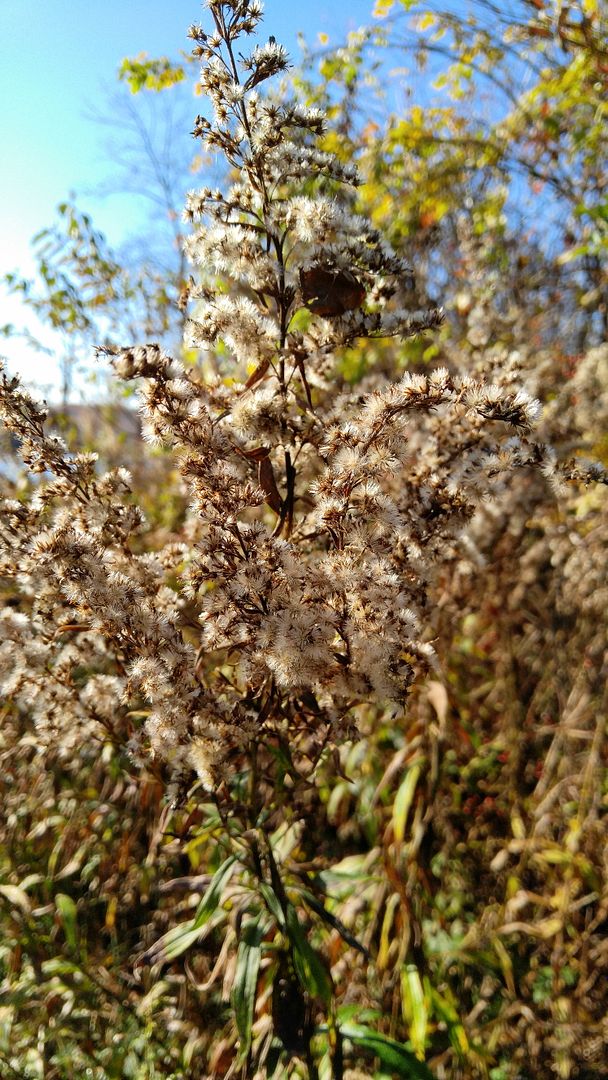
The goldenrods are no longer golden, but these are the seeds of nexy year.
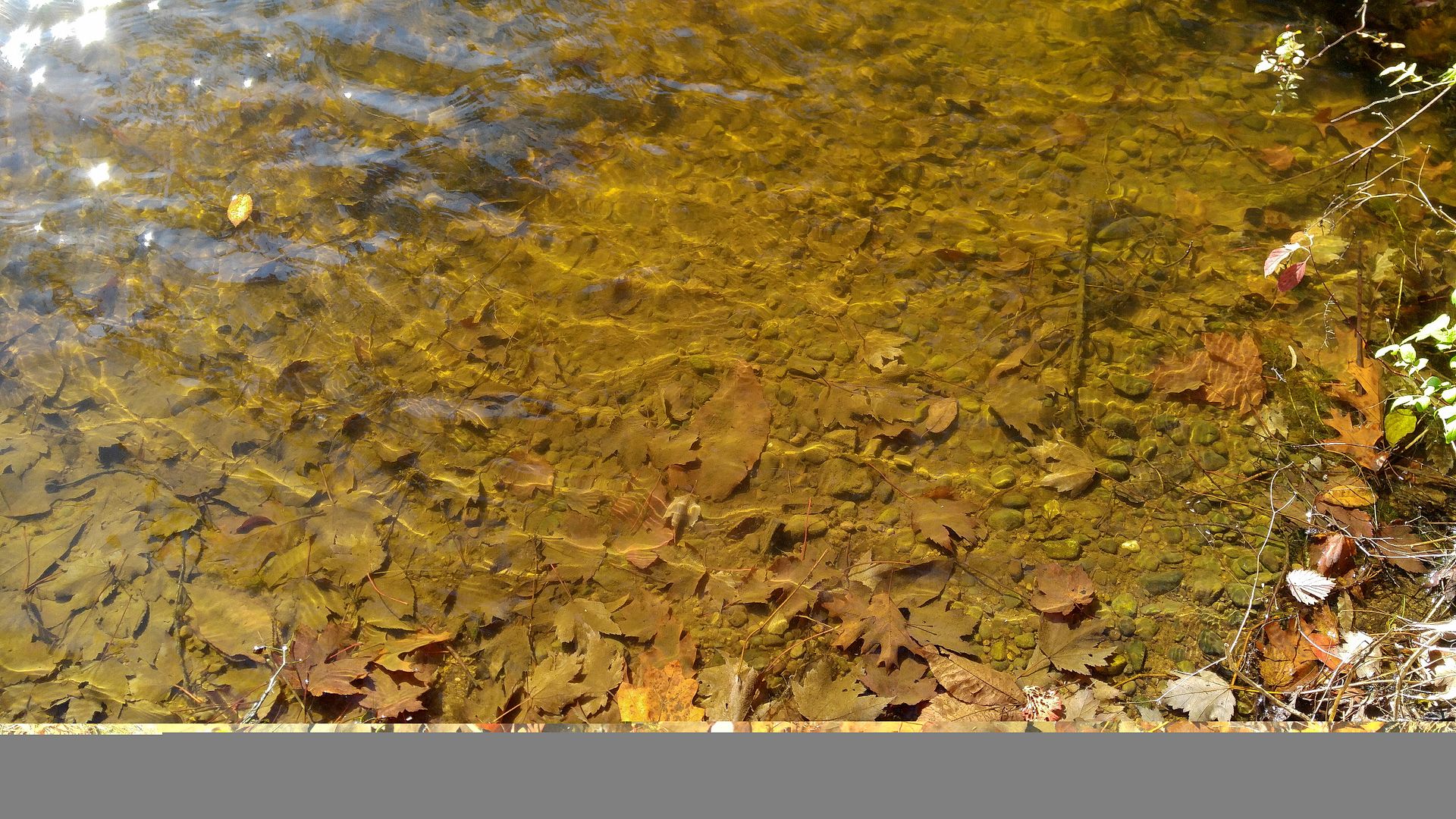
The water is still warm, and depending on other factors that can make it clearer or more cloudy. Microorganisms like sunshine and water full of nutrients, but warm water holds less dissolved oxygen than cold water. It's why the chilly Atlantic water is so cloudy with microplankton and other microorganisms, while the seemingly lush tropic waters are crystal clear... they're actually so low in oxygen that it's hard for plankton and microorganisms to live there.

Fifty years of fishermen casting from this spot have worn away the soil that used to surround these roots, but exposed roots will just grow denser bark and keep trying to grow downward.
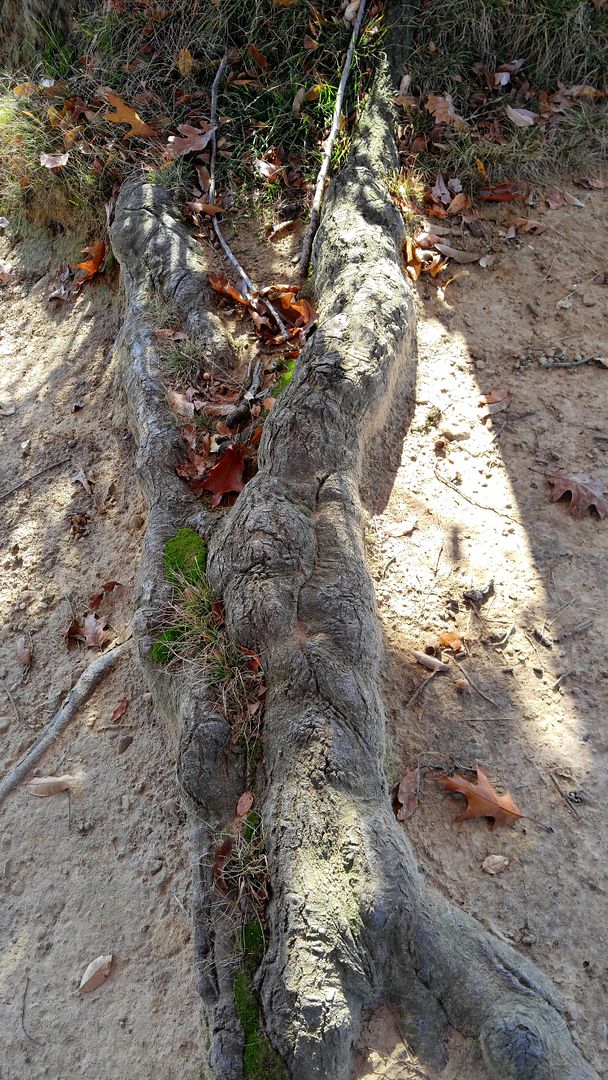
This long-exposed root has become so worn and durable that it looks like the trunk of some wooden elephant.
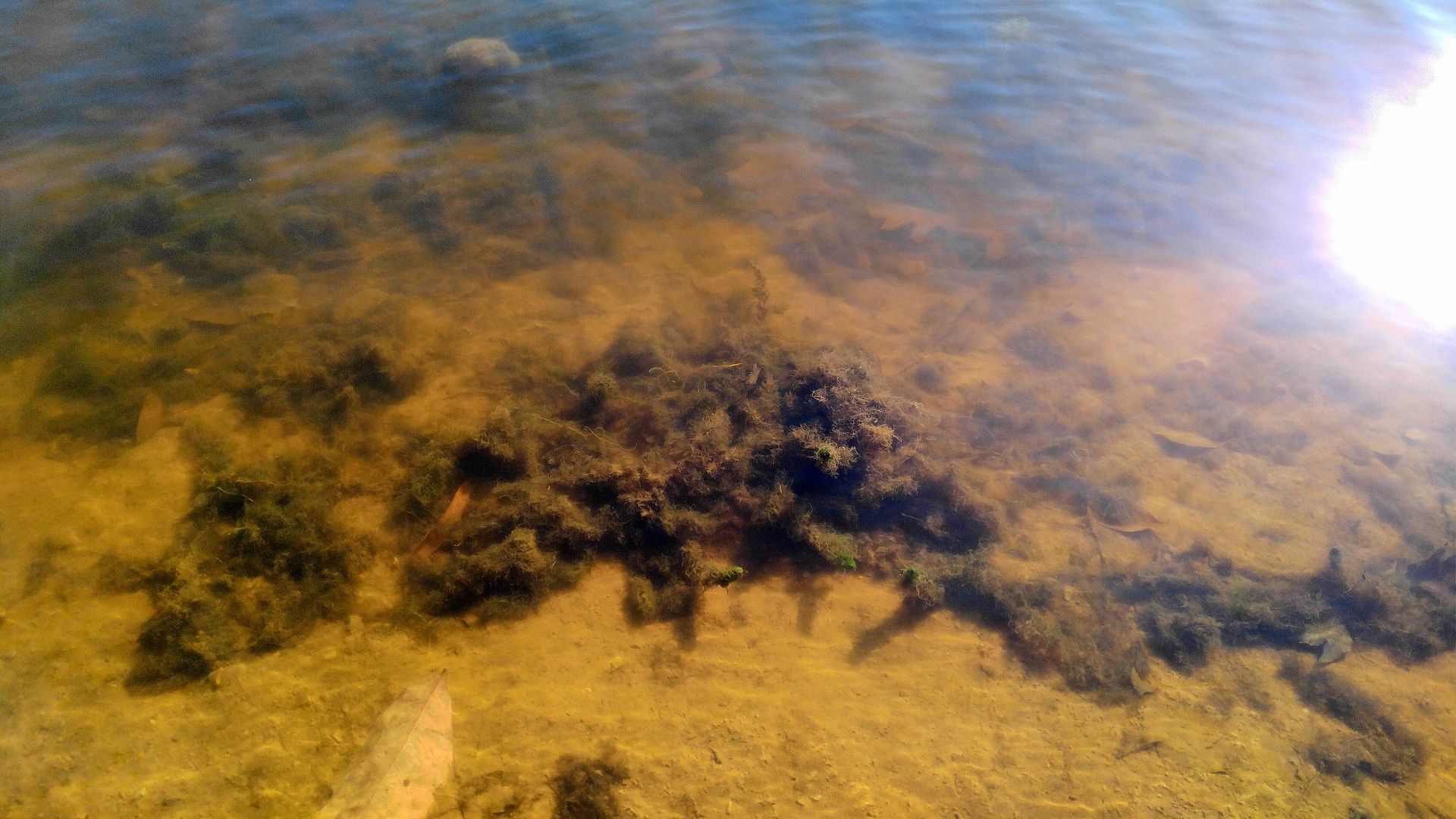
Where the water is shallow, algae can happily do their photosynthesis business.
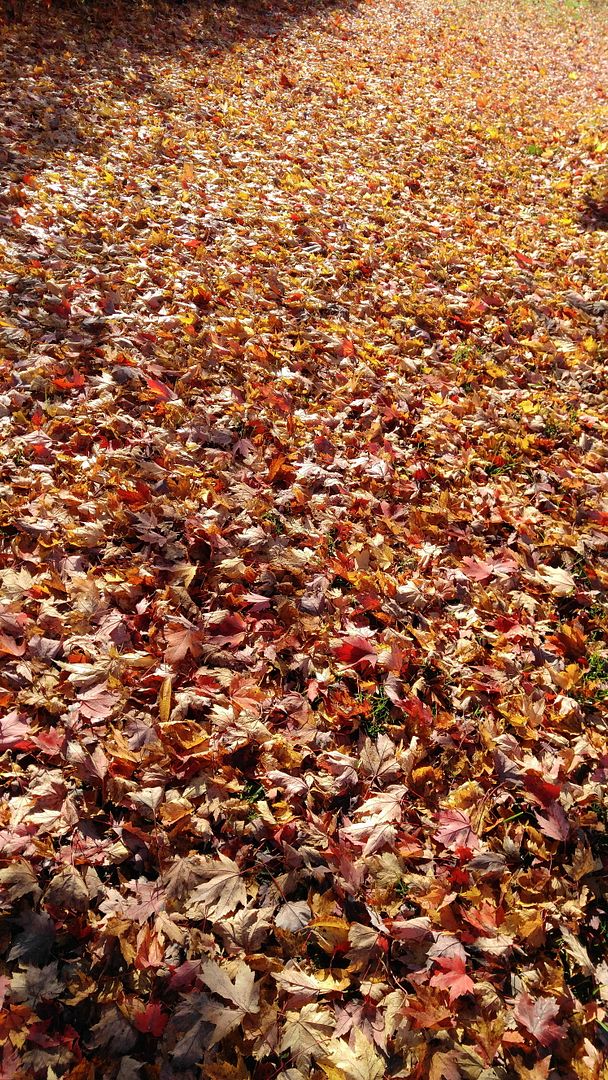
The ground is carpeted in red and gold, mostly from one huge maple overhead.
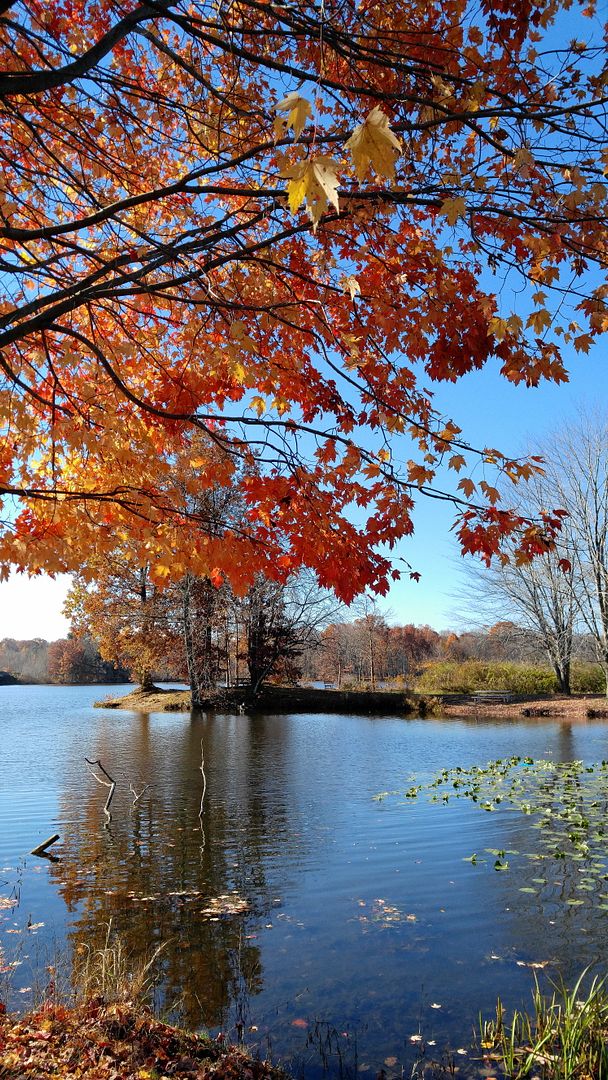
Still hanging onto some fire-orange and gold leaves, this tree seems to be leaning out to look into the water.
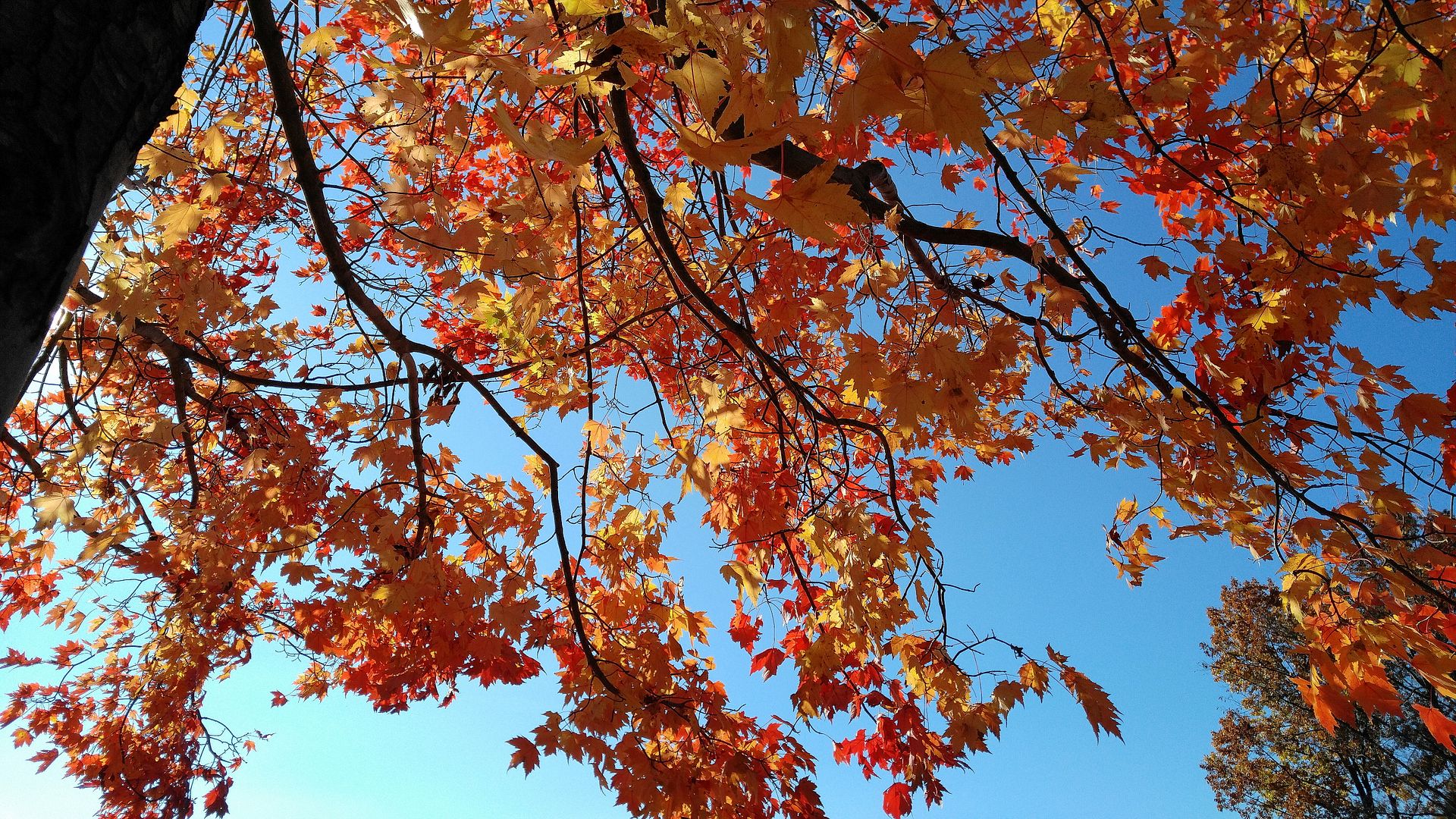
The most perfect peaches and apples would be these colors.

This amazing little discovery... barely bigger than a pair of quarters. I believe it's Aleuria aurantia, usually either called the orange peel fungus or orange fairy cup fungus.
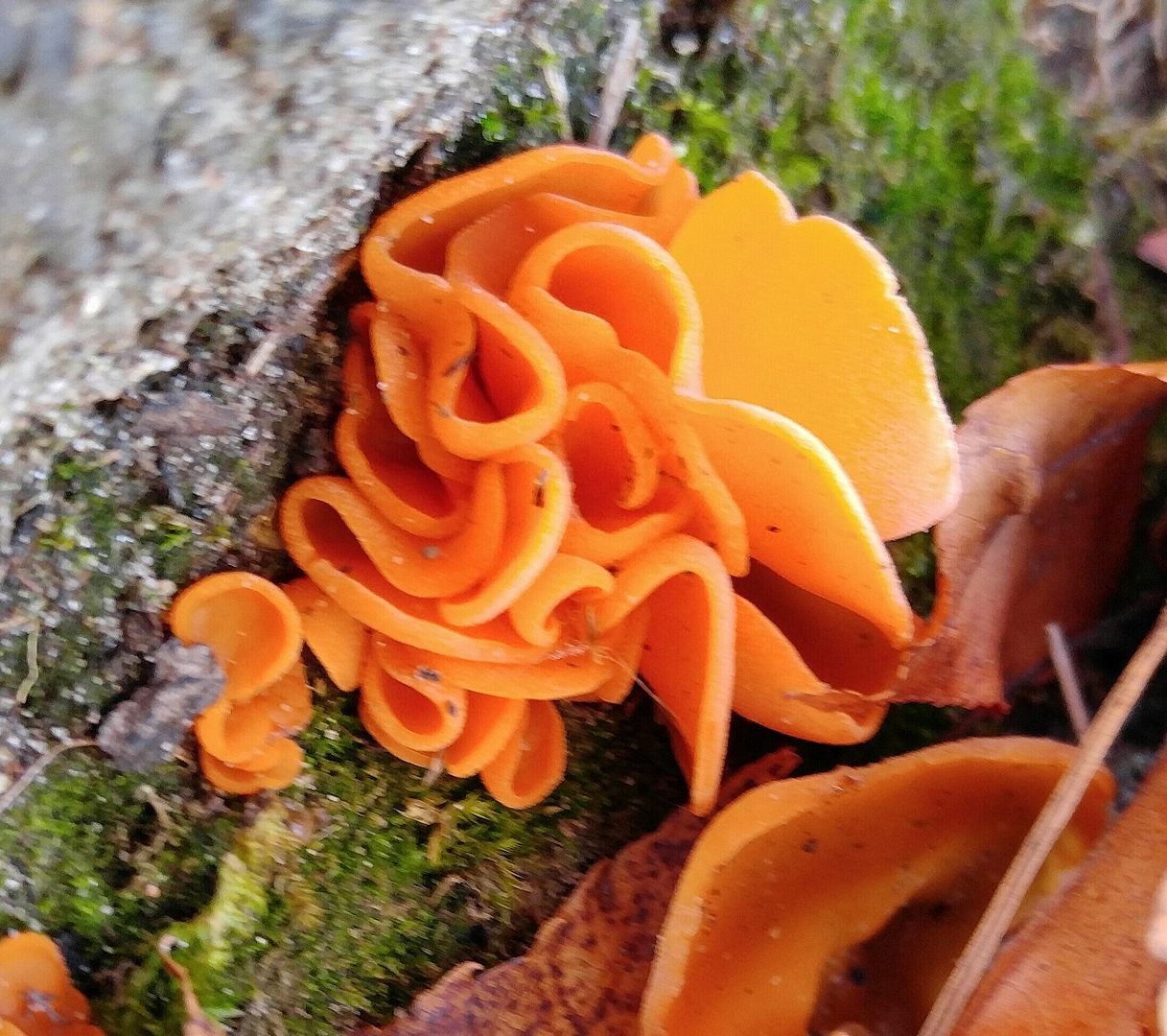
Here's another one growing nearby. They are growing at the base of a tree, but they are not wood decay fungi... they are actually growing in the rich soil produced by other fungi that are rotting a big hole in the trunk above them.
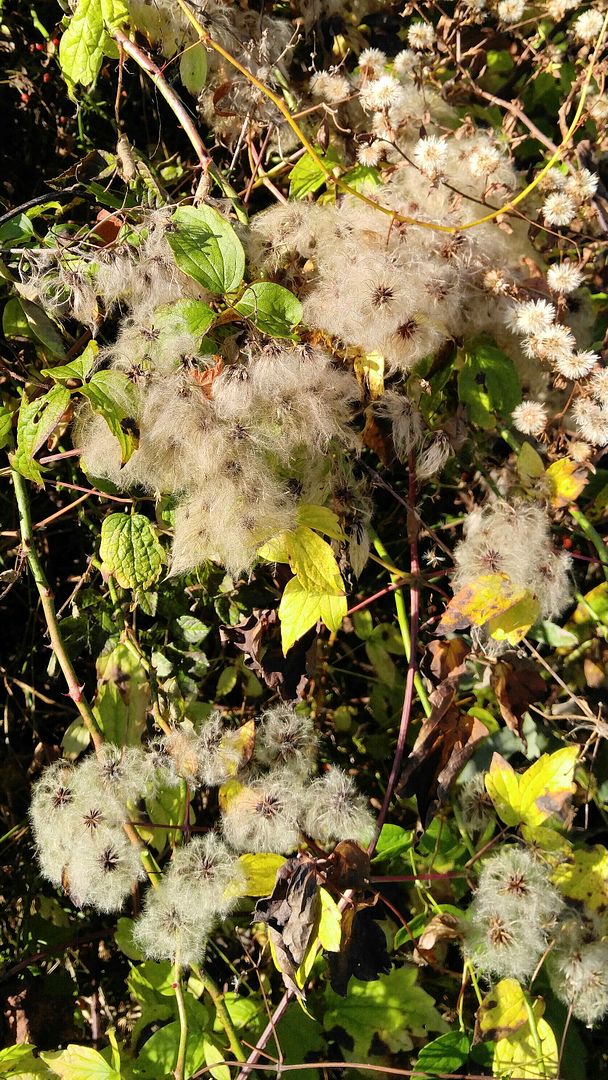
I'm always amused by the incredibly untidy messes of these wild clematis, which looks like it went to bed with a head full of hair spray and woke up looking like this.
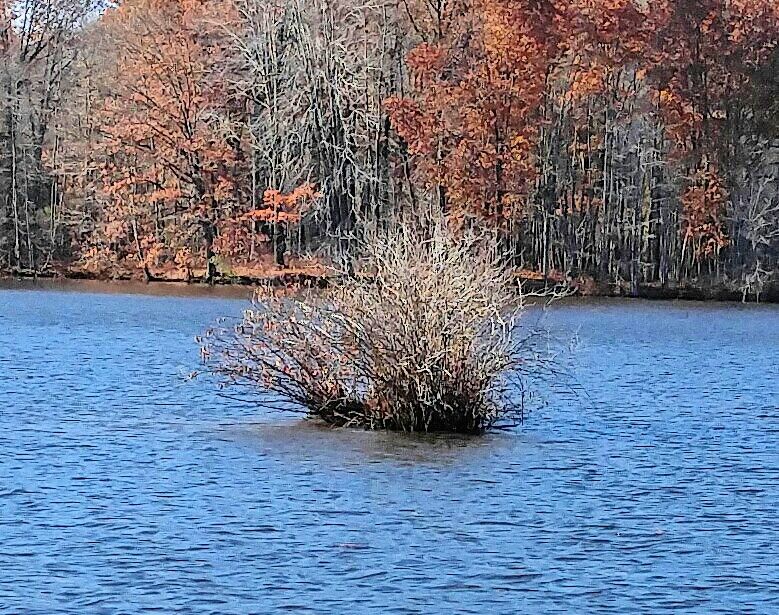
You remember Lake Bush, right? Well, Lake Bush is still here, giving absolutely no fucks about what you think and not in the least bit concerned about growing in the middle of a lake. Lake Bush does whatever Lake Bush wants, and fuck y'all if you don't like it. The pure defiance of Lake Bush always makes me feel happy and a little rebellious.
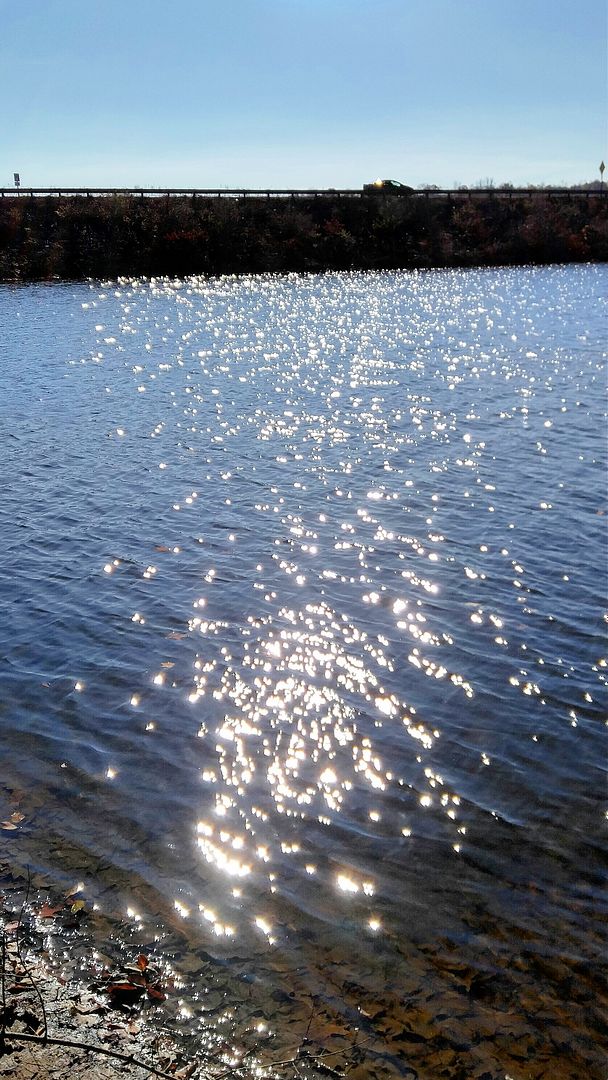
There are no diamonds that could shine like my lake in the sun. Of course, the diamonds would last longer... but they could never be so bright.
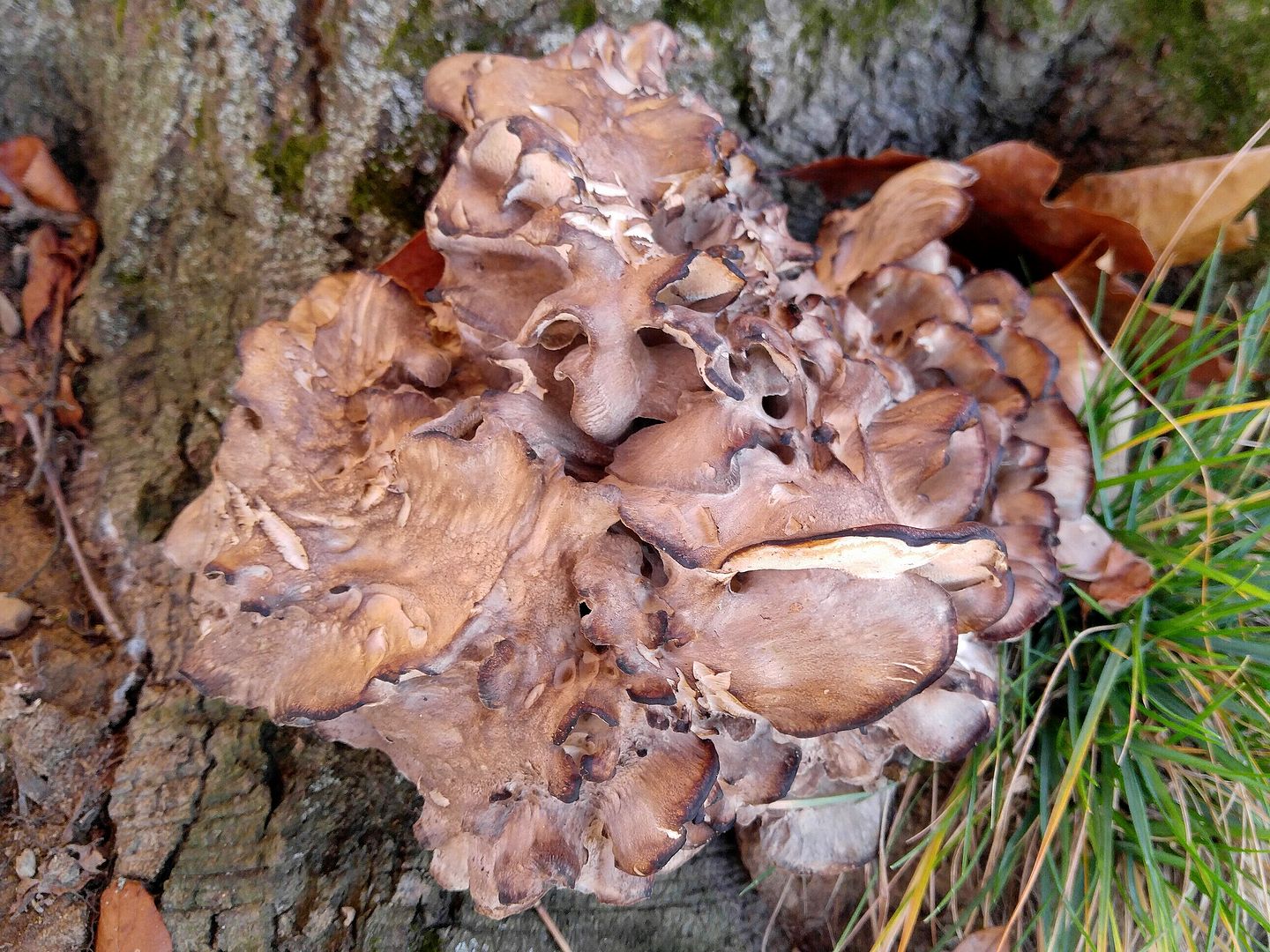
I will straight up admit that I have no idea what the hell this is or used to be, other than some sort of fungus fruiting body. It's pretty cool, though!
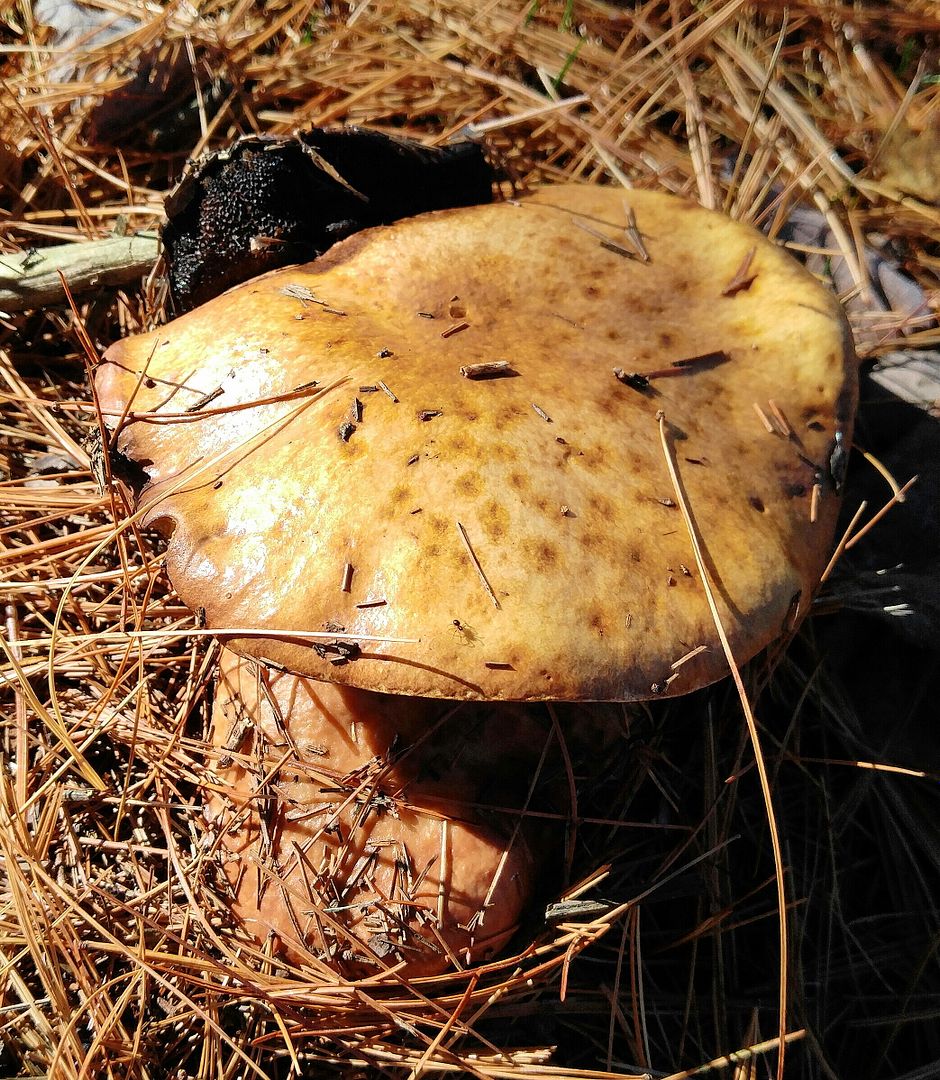
Under the pine trees, I always look for mushrooms, because at this dock, there are big, old pine trees with lots of space between them. This means that their roots have room to spread out widely and there's only a coating of pine needles, and that makes conditions absolutely perfect for the pines' fungus root symbiotes to produce fruiting bodies.
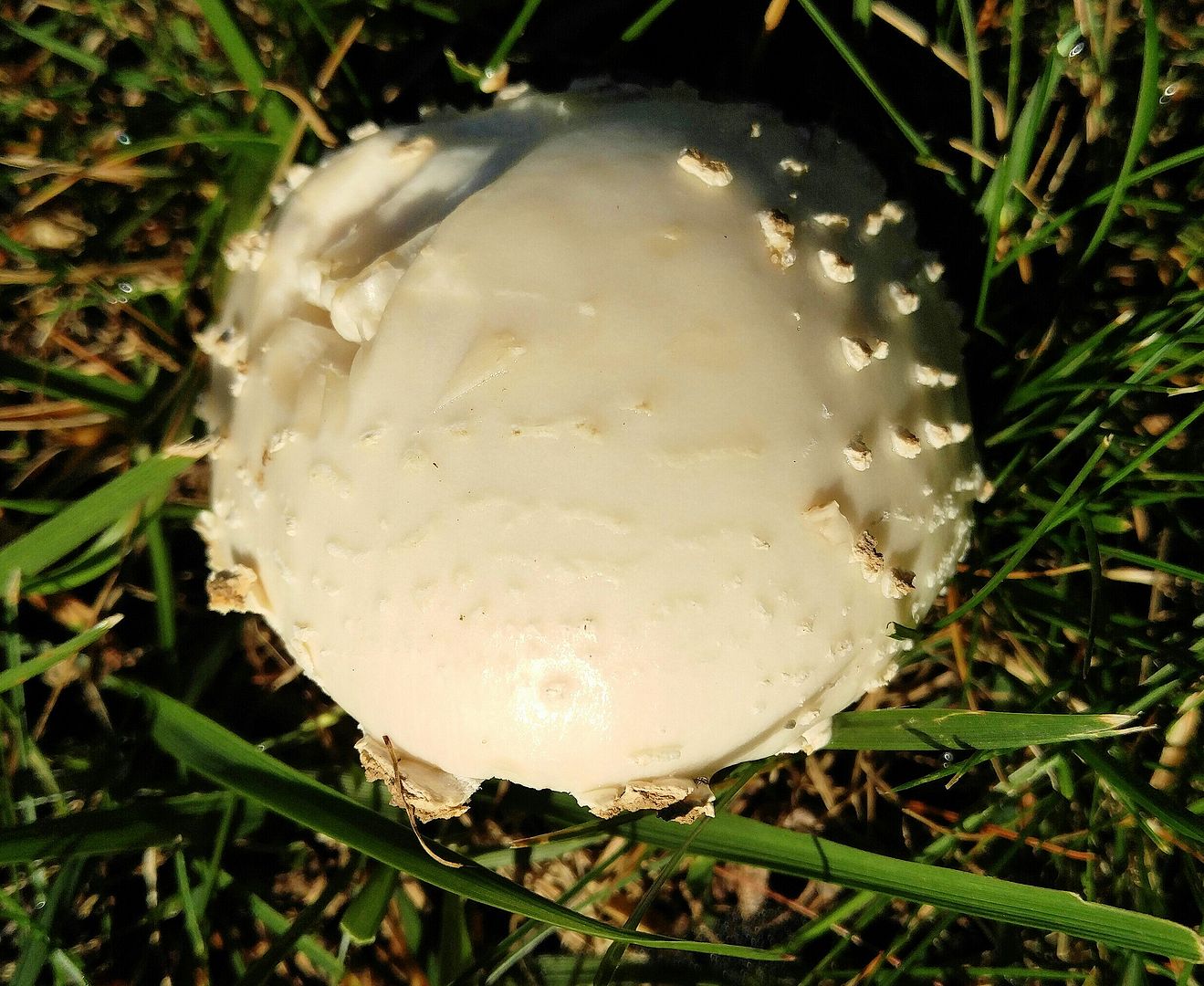
I can basically bet money on finding these here at various points between midsummer and fall, as long as it's been damp. These mushrooms live in a cozy symbiotic relationship with the tree roots, and these pine trees are large, healthy landscape specimens, so they have lots of room to grow and therefore lots of room to feed their symbiotes.
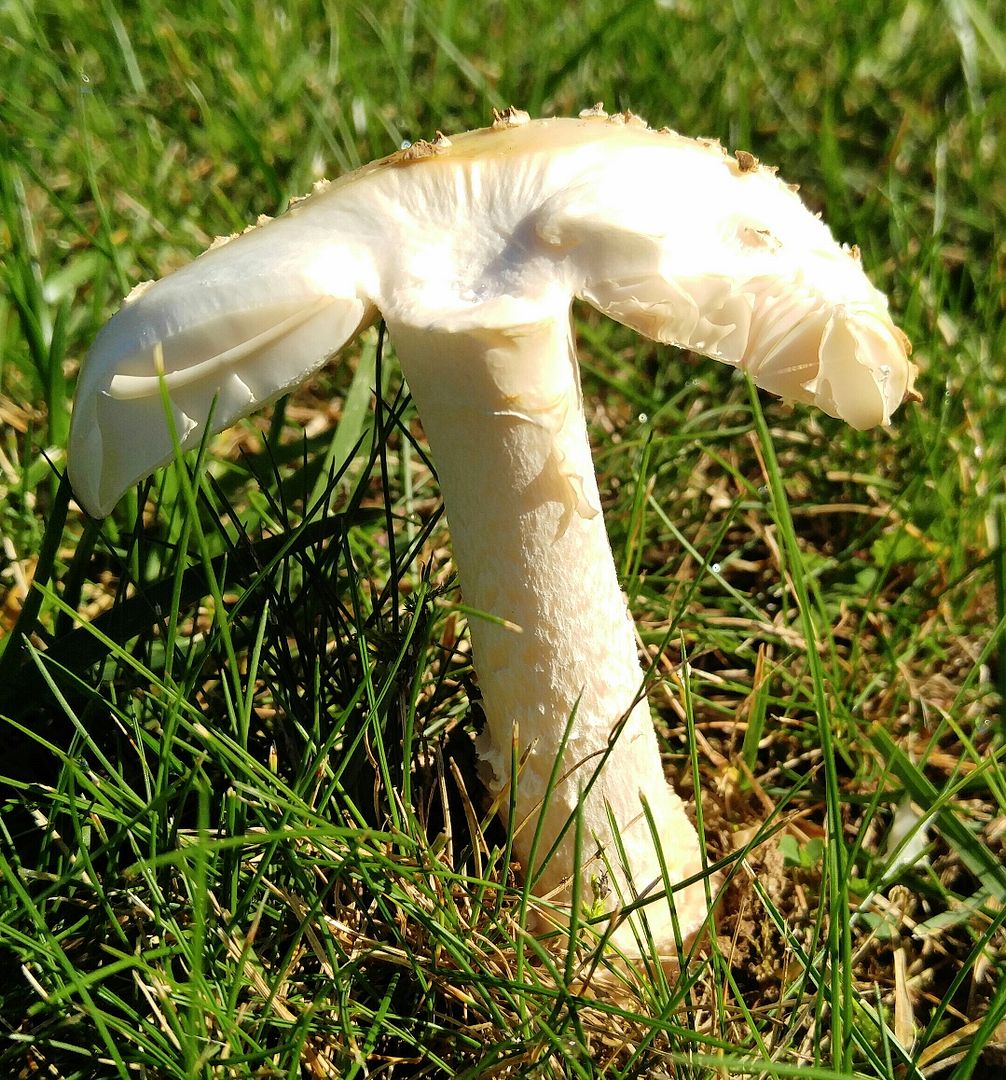
This one has run into some sort of accident, but that gives you a chance to look at the inside. And one look at the inside tells me why our local mushroom hunters haven't touched these particular ones... you can't really tell if there's a cup at the base without digging, and the veil around the stem may have deteriorated, but pure white gills that are not attached to the stem are indications that this one is poisonous.

Enlarging this one a bit because it's such a nice example. Not only can you see that the gills are pure white and that they are free of the stem, but if you look in the right side of the picture you can see a hole in the ground with a little white cup. This isn't a definitive identification but you would not be a smart mushroom hunter if you decided to find out by tasting it.
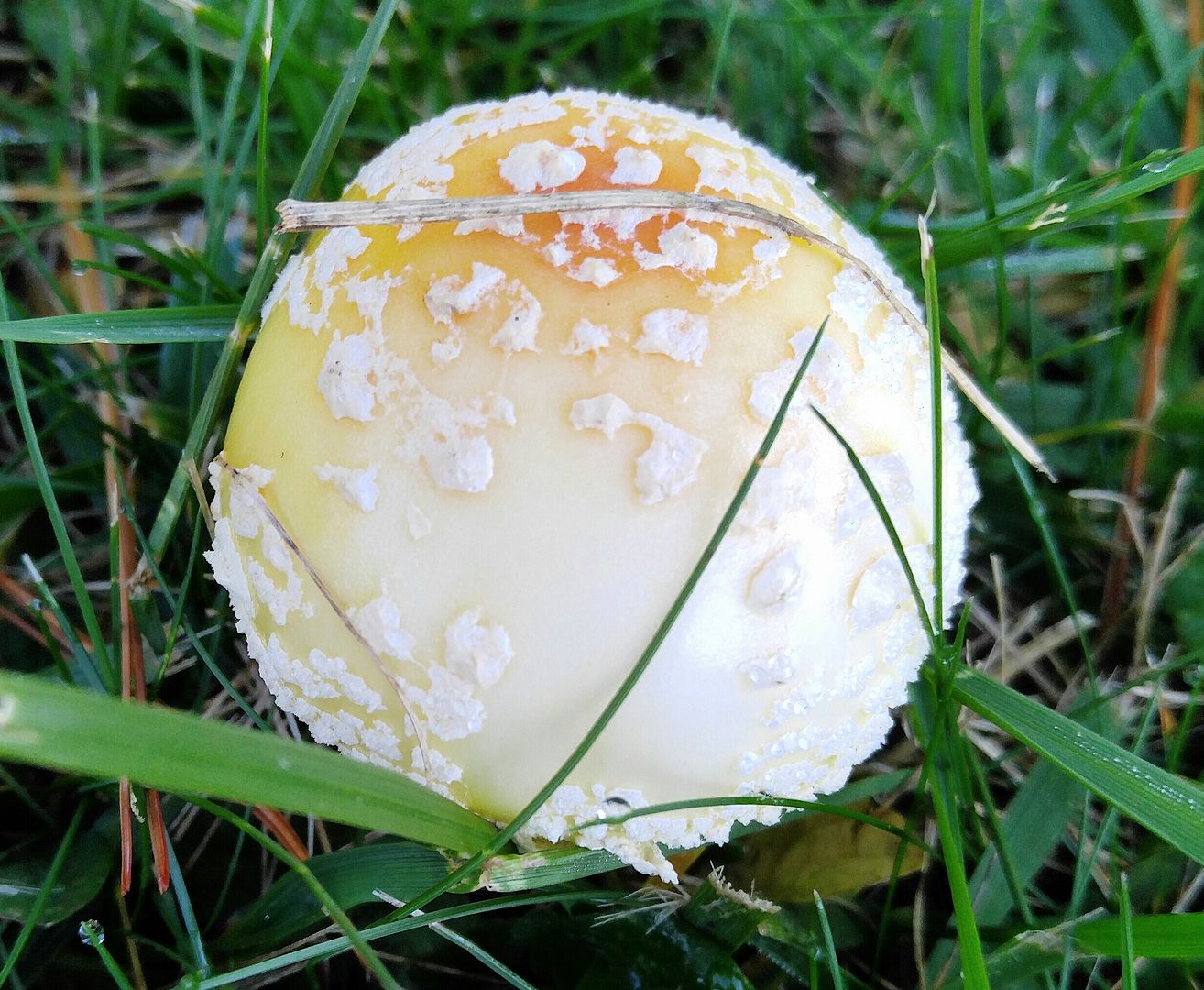
Not sure what this pretty little baby is... it could be an Amanita muscaria, which are conifer symbiotic fungi that in the eastern USA are usually yellow (in the west they are usually the classic bright red). It's a bit light in color, though... those fungi are usually a fairly bright orange-yellow.
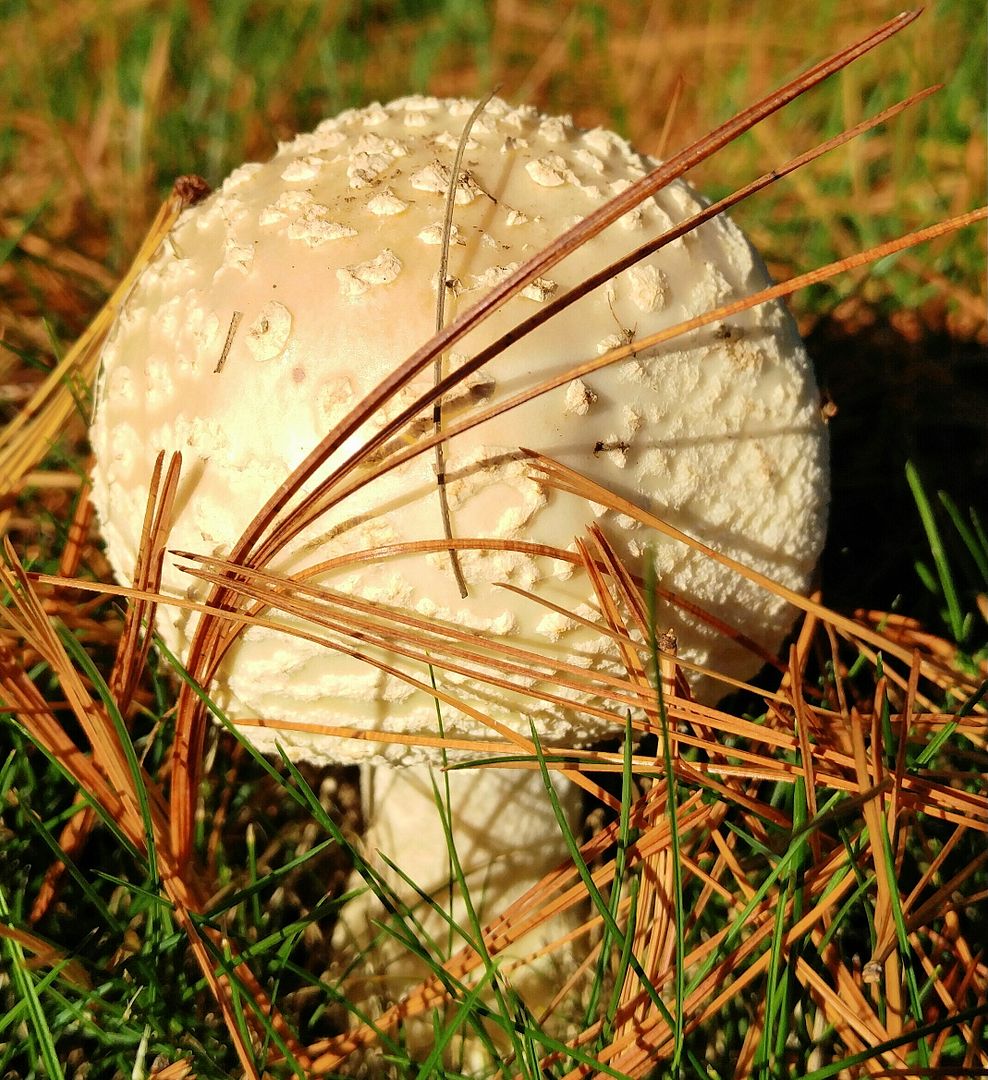
Whatever that one is, I think this is the same thing, and just slightly more mature and starting to stand up on its stem. It still has not opened its cap, because the spores inside aren't mature.
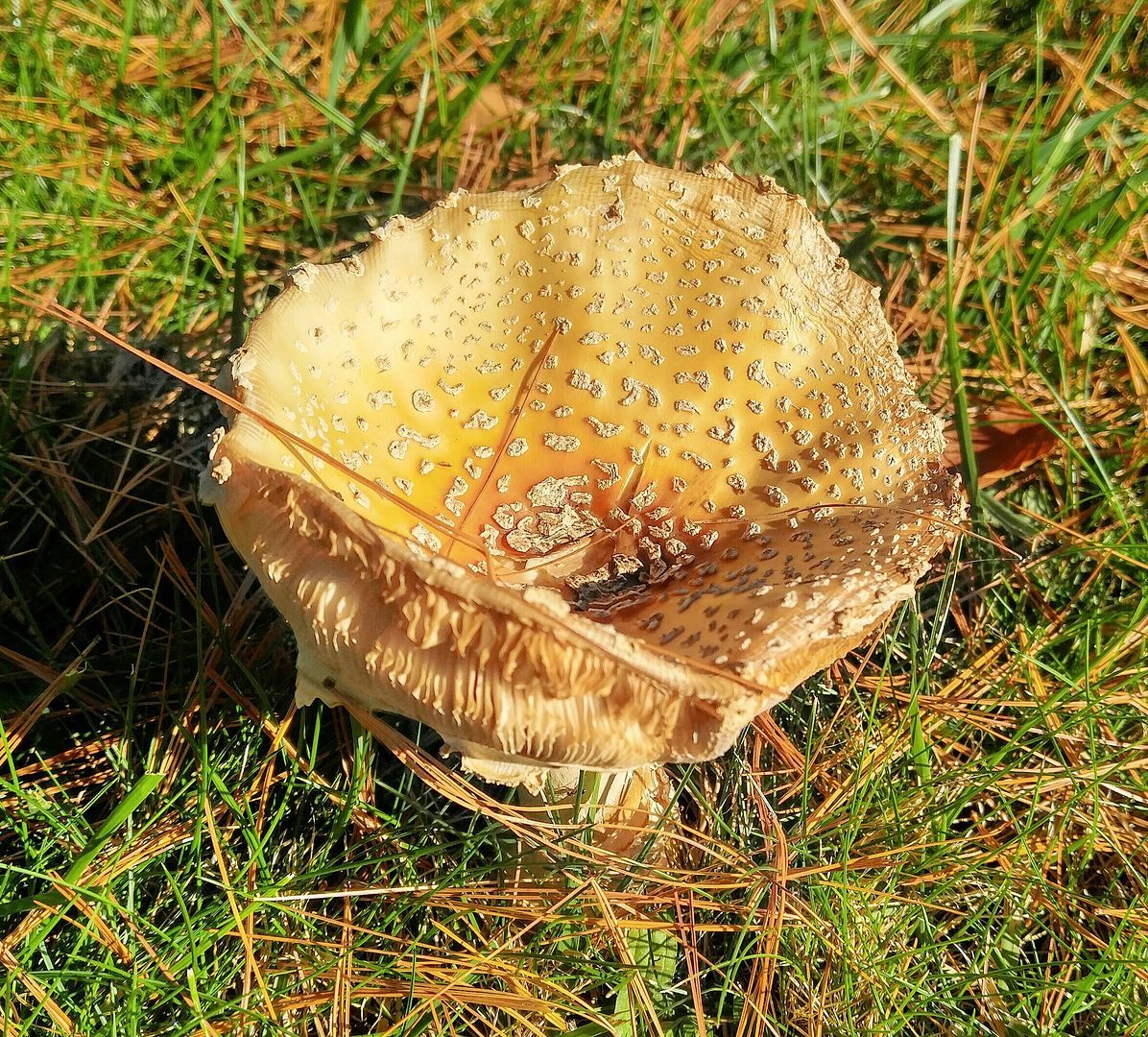
Here's what appears to be a mature version of the same thing, with the gills wide open for maximum spore dispersal.

Not only is this extraordinarly beautiful... because it absolutely is... but there's a bit of something interesting going on. See the band of material underneath the gills? That's part of the veil, the protective covering that contained the baby mushroom until it was ready to open up. Usually all that's left of the veil is a ring around the stem, but it looks like on this mushroom, the veil didn't disintegrate as it should and has remained wrapped around some of the gills.
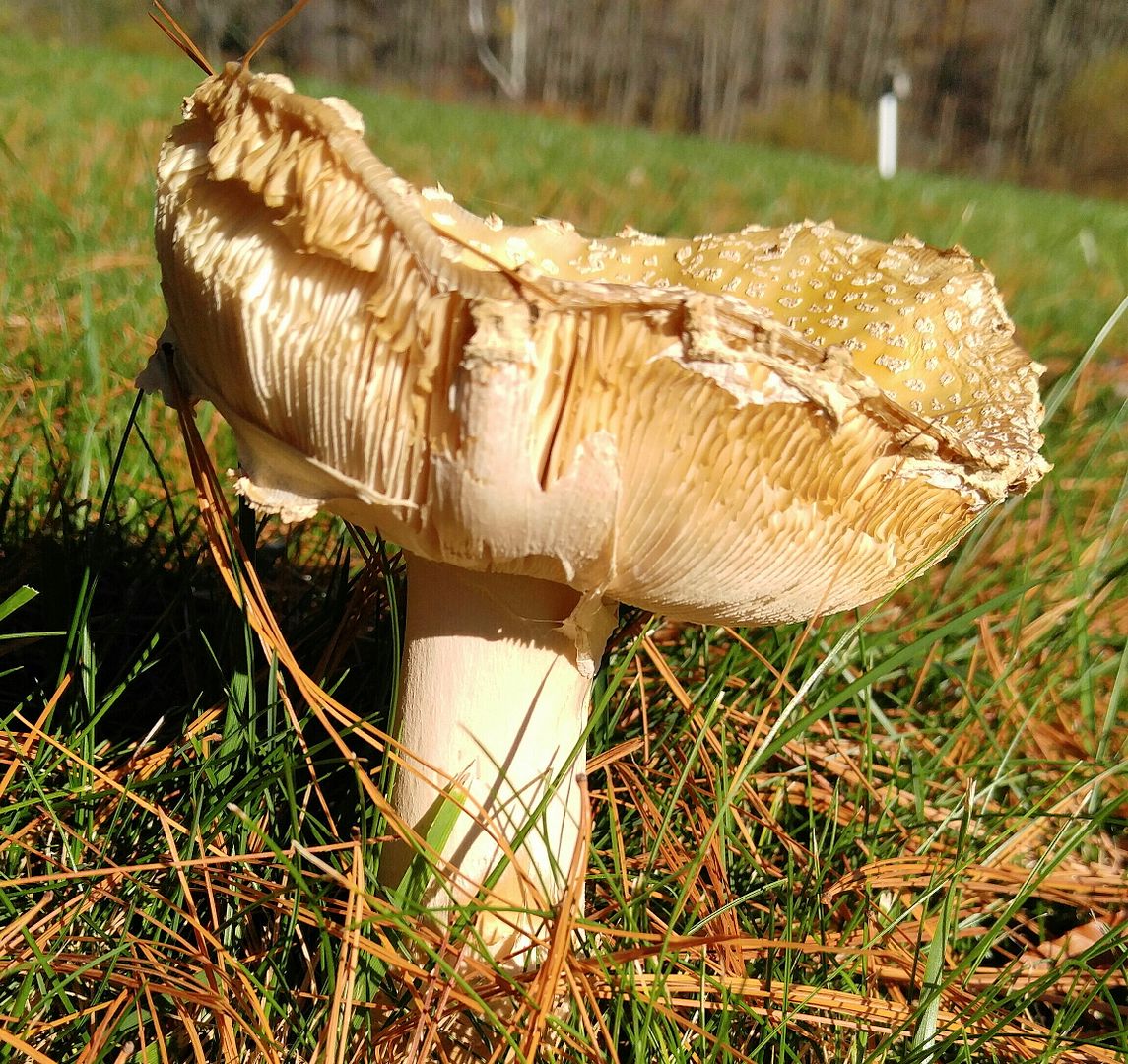
An associate of the previous one growing nearby.
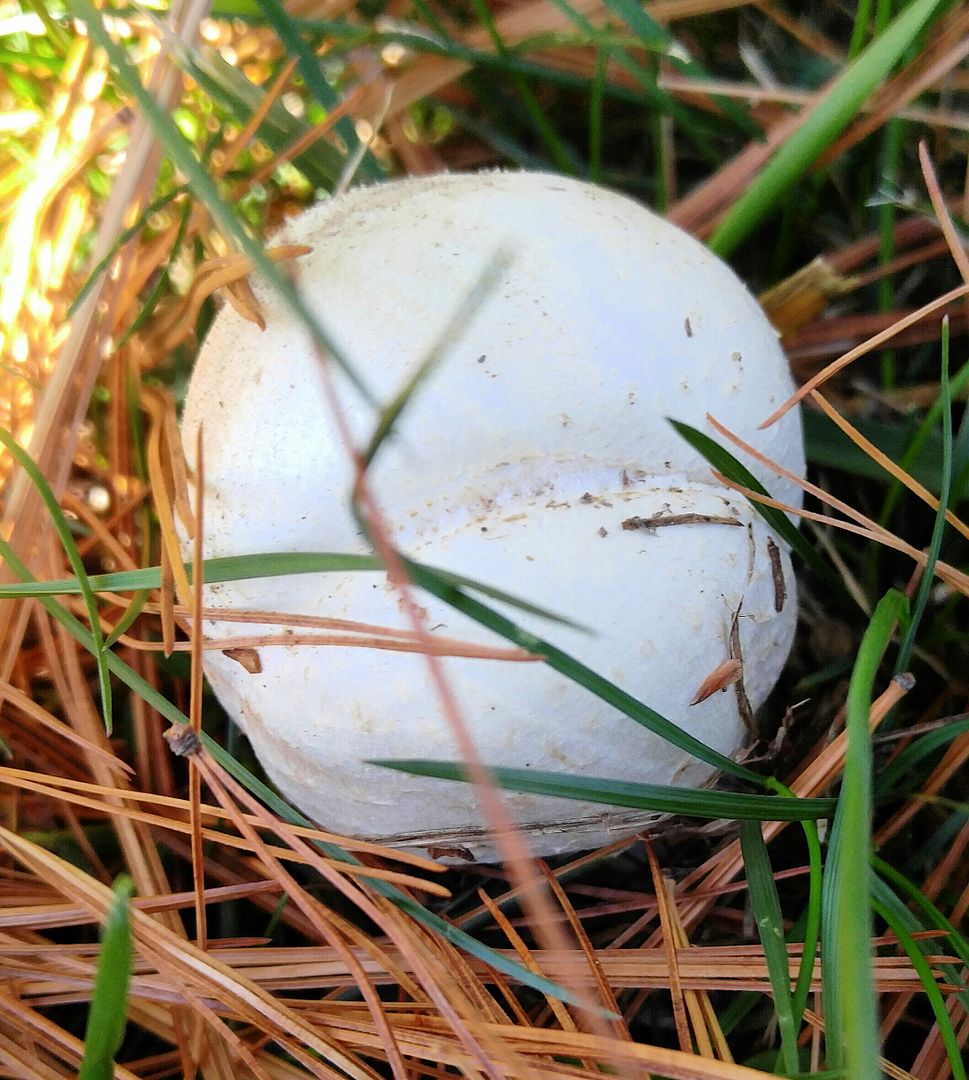
This one is a baby, and this is the stage when people are most likely to accidentally pick a dangerous mushroom thinking it's a baby puffball or meadow mushroom. When they're still inside the veil, they could be just about anything, and unless you cut it open and take a good look you won't know for sure.
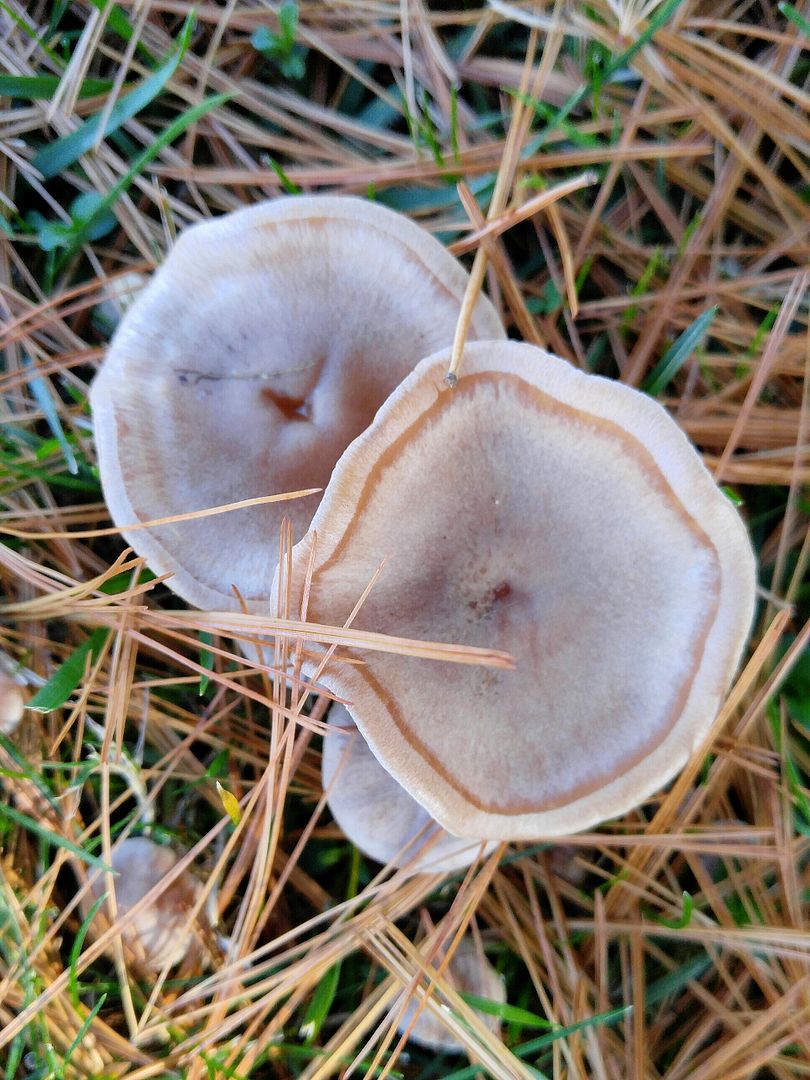
And for a last look, these pretty little things.
Have a lovely evening/day/anything!
.
.
.

Some oaks are leafless or all brown now, but this young one's still putting on a beautiful golden display.

The goldenrods are no longer golden, but these are the seeds of nexy year.

The water is still warm, and depending on other factors that can make it clearer or more cloudy. Microorganisms like sunshine and water full of nutrients, but warm water holds less dissolved oxygen than cold water. It's why the chilly Atlantic water is so cloudy with microplankton and other microorganisms, while the seemingly lush tropic waters are crystal clear... they're actually so low in oxygen that it's hard for plankton and microorganisms to live there.

Fifty years of fishermen casting from this spot have worn away the soil that used to surround these roots, but exposed roots will just grow denser bark and keep trying to grow downward.

This long-exposed root has become so worn and durable that it looks like the trunk of some wooden elephant.

Where the water is shallow, algae can happily do their photosynthesis business.

The ground is carpeted in red and gold, mostly from one huge maple overhead.

Still hanging onto some fire-orange and gold leaves, this tree seems to be leaning out to look into the water.

The most perfect peaches and apples would be these colors.

This amazing little discovery... barely bigger than a pair of quarters. I believe it's Aleuria aurantia, usually either called the orange peel fungus or orange fairy cup fungus.

Here's another one growing nearby. They are growing at the base of a tree, but they are not wood decay fungi... they are actually growing in the rich soil produced by other fungi that are rotting a big hole in the trunk above them.

I'm always amused by the incredibly untidy messes of these wild clematis, which looks like it went to bed with a head full of hair spray and woke up looking like this.

You remember Lake Bush, right? Well, Lake Bush is still here, giving absolutely no fucks about what you think and not in the least bit concerned about growing in the middle of a lake. Lake Bush does whatever Lake Bush wants, and fuck y'all if you don't like it. The pure defiance of Lake Bush always makes me feel happy and a little rebellious.

There are no diamonds that could shine like my lake in the sun. Of course, the diamonds would last longer... but they could never be so bright.

I will straight up admit that I have no idea what the hell this is or used to be, other than some sort of fungus fruiting body. It's pretty cool, though!

Under the pine trees, I always look for mushrooms, because at this dock, there are big, old pine trees with lots of space between them. This means that their roots have room to spread out widely and there's only a coating of pine needles, and that makes conditions absolutely perfect for the pines' fungus root symbiotes to produce fruiting bodies.

I can basically bet money on finding these here at various points between midsummer and fall, as long as it's been damp. These mushrooms live in a cozy symbiotic relationship with the tree roots, and these pine trees are large, healthy landscape specimens, so they have lots of room to grow and therefore lots of room to feed their symbiotes.

This one has run into some sort of accident, but that gives you a chance to look at the inside. And one look at the inside tells me why our local mushroom hunters haven't touched these particular ones... you can't really tell if there's a cup at the base without digging, and the veil around the stem may have deteriorated, but pure white gills that are not attached to the stem are indications that this one is poisonous.

Enlarging this one a bit because it's such a nice example. Not only can you see that the gills are pure white and that they are free of the stem, but if you look in the right side of the picture you can see a hole in the ground with a little white cup. This isn't a definitive identification but you would not be a smart mushroom hunter if you decided to find out by tasting it.

Not sure what this pretty little baby is... it could be an Amanita muscaria, which are conifer symbiotic fungi that in the eastern USA are usually yellow (in the west they are usually the classic bright red). It's a bit light in color, though... those fungi are usually a fairly bright orange-yellow.

Whatever that one is, I think this is the same thing, and just slightly more mature and starting to stand up on its stem. It still has not opened its cap, because the spores inside aren't mature.

Here's what appears to be a mature version of the same thing, with the gills wide open for maximum spore dispersal.

Not only is this extraordinarly beautiful... because it absolutely is... but there's a bit of something interesting going on. See the band of material underneath the gills? That's part of the veil, the protective covering that contained the baby mushroom until it was ready to open up. Usually all that's left of the veil is a ring around the stem, but it looks like on this mushroom, the veil didn't disintegrate as it should and has remained wrapped around some of the gills.

An associate of the previous one growing nearby.

This one is a baby, and this is the stage when people are most likely to accidentally pick a dangerous mushroom thinking it's a baby puffball or meadow mushroom. When they're still inside the veil, they could be just about anything, and unless you cut it open and take a good look you won't know for sure.

And for a last look, these pretty little things.
Have a lovely evening/day/anything!
.
.
.